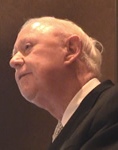Year: 2009
An analysis is accomplished of the input power requirement of High-Frequency Gravitational Wave (HFGW) generators. Several techniques are explored using both off-the-shelf and advanced-nanotechnology generator elements. It is concluded that proof-of-concept test, involving N off-the-shelf array elements could be of meter to kilometer length and require 25 MW or less power if array elements are in a staggered arrangement. The power and size of an operational nanotechnology HFGW generator or transmitter device can be greatly reduced by the focusing effect of N2 radiator pairs. Utilization of conventional piezoelectric Film Bulk Acoustic Resonators (FBARs), tailored and scaled for HFGW generation, could provide the initial commercial generation means. The use of the new infrared-energized ring concept of Woods and the use of a double helix array proposed by Baker may even further reduce the power and size requirements of the device to <<20 W and mm in length and width.


